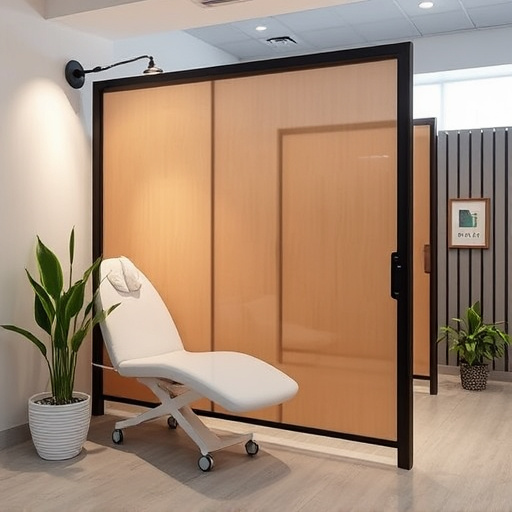Controlled testing environments using dynamometers are crucial for accurately evaluating cold air intake (CAI) systems in vehicles. These advanced methods isolate variables like temperature, pressure, and humidity to simulate real-world driving conditions. By meticulously measuring CAI performance, engineers can optimize design elements and materials, ensuring improved engine power, efficiency, and fuel economy. The process involves tools like flow meters and thermocouples to assess airflow rates, temperature drops, and pressure differentials under various load scenarios, leading to enhanced overall vehicle performance.
In the pursuit of optimal engine performance, controlled testing environments serve as the cornerstone for accurate evaluation. This article delves into the intricacies of these environments, with a specific focus on cold air intake (CAI) performance testing methodologies. We explore how meticulously crafted protocols enhance engine efficiency, ensuring data-driven improvements. By understanding the foundational principles of controlled testing, we uncover the secrets behind successful CAI modifications, empowering enthusiasts and engineers alike to achieve peak engine performance safely and effectively.
- Understanding Controlled Testing Environments: The Foundation of Accurate Performance Evaluation
- Cold Air Intake Performance Testing: A Methodology Deep Dive
- Optimizing Engine Efficiency through Rigorous Controlled Testing Protocols
Understanding Controlled Testing Environments: The Foundation of Accurate Performance Evaluation

Controlled testing environments are the cornerstone for accurately evaluating vehicle performance, especially when focusing on specific components like cold air intake systems. These environments provide a consistent and isolated setting where variables can be meticulously controlled, ensuring that any changes in performance are directly attributed to the component being tested—in this case, the cold air intake (CAI). By managing factors such as temperature, pressure, and humidity, researchers or engineers can simulate real-world driving conditions while minimizing external influences.
This methodical approach, often employing advanced testing methodologies like dynamometer setups, allows for precise measurements of CAI performance. These tests can quantify the system’s ability to draw in cold, dense air, which is crucial for maximizing engine power and efficiency. By understanding how different design elements and materials impact this process, manufacturers can develop high-performance intake systems tailored to specific vehicle needs, ensuring optimal engine performance and fuel economy.
Cold Air Intake Performance Testing: A Methodology Deep Dive

Cold Air Intake (CAI) Performance Testing is a meticulous process designed to evaluate and optimize engine ingestion systems. This methodology involves subjecting the CAI to controlled conditions, simulating real-world driving scenarios. By measuring air flow rates, temperature drops, and pressure differentials, engineers gain valuable insights into the efficiency of the intake system. Advanced tools like flow meters and thermocouples play a crucial role in this process, providing precise data that highlights areas for improvement.
The testing protocol begins with setting up a controlled environment, often within a dynamometer chamber. Here, various parameters like engine speed, throttle position, and ambient conditions are meticulously adjusted to mirror diverse driving situations. During the test, clean air is forced through the CAI at varying rates, allowing for detailed analysis of its performance characteristics. This deep dive into the CAI’s functionality ensures that modifications or upgrades enhance overall engine performance, ultimately contributing to improved vehicle dynamics and fuel efficiency.
Optimizing Engine Efficiency through Rigorous Controlled Testing Protocols

In the pursuit of maximizing engine efficiency, controlled testing environments play a pivotal role, especially in evaluating the impact of modifications like cold air intake systems. Rigorous testing methodologies allow engineers to uncover subtle performance gains that might otherwise go unnoticed during real-world driving conditions. By creating standardized and controlled scenarios, these tests ensure that any improvements are attributed directly to the specific component under scrutiny, such as a cold air intake (CAI). This involves subjecting engines to various load conditions while measuring key metrics like airflow, temperature, and pressure.
The testing protocol often includes dynamic performance testing, where the engine’s response to rapid changes in throttle input is analyzed, mimicking real-world driving scenarios. Additionally, static testing methodologies assess the system’s efficiency under steady-state conditions, providing insights into the CAI’s ability to deliver cool, dense air consistently. The data gathered from these tests guides engineers in fine-tuning the intake design, ensuring optimal air induction, and ultimately enhancing overall engine performance and fuel efficiency.
Controlled testing environments play a pivotal role in accurately evaluating vehicle performance, especially when focusing on components like cold air intake systems. By employing methodologies such as detailed cold air intake performance testing, engineers can optimize engine efficiency and ensure optimal vehicle dynamics. This article has explored the foundations of controlled testing, delved into specific techniques like cold air intake performance testing methodology, and highlighted their significance in revolutionizing engine performance.














